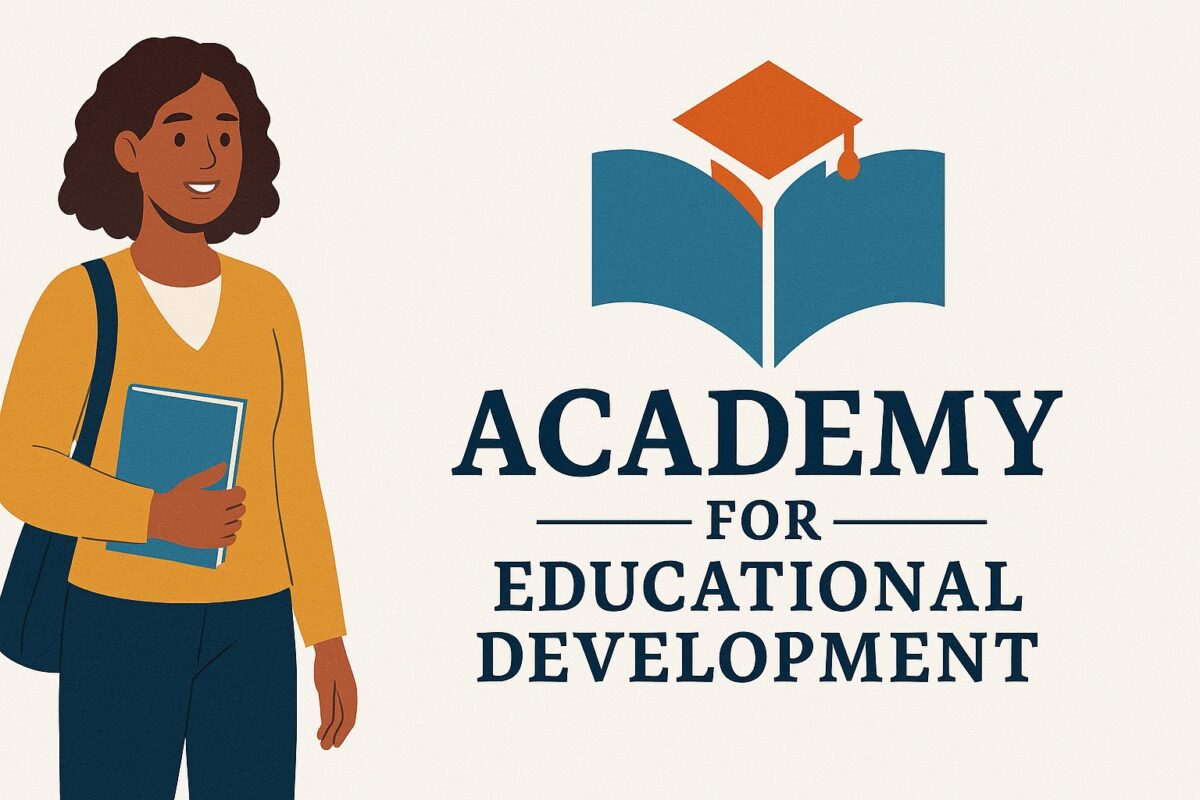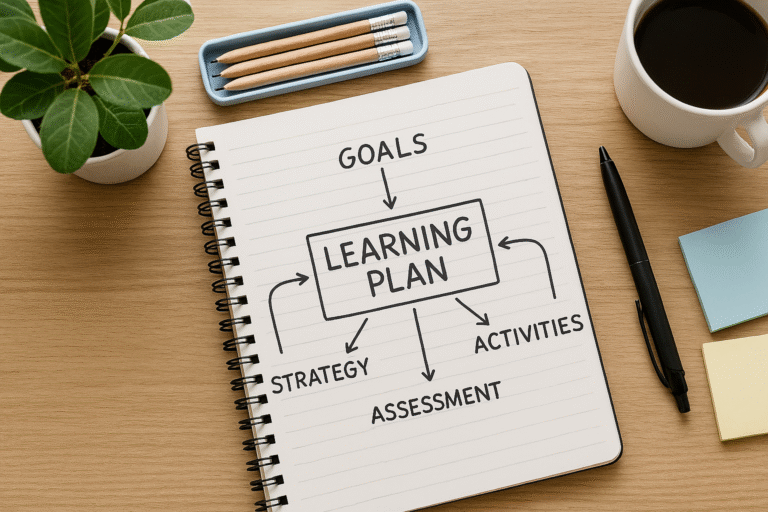
In today’s rapidly evolving educational landscape, the need for specialized institutions that bridge the gap between theory and practice has never been more critical. An academy for educational development represents a transformative approach to enhancing learning outcomes, advancing pedagogical innovation, and building sustainable educational systems that serve diverse communities worldwide.
These specialized institutions serve as catalysts for educational excellence, offering comprehensive solutions that address the complex challenges facing modern education systems. From teacher professional development to curriculum innovation, research-driven policy formation to community engagement initiatives, academies for educational development play a pivotal role in shaping the future of learning.
Whether you’re an educator seeking professional growth, an administrator planning institutional improvements, or a policy maker designing system-wide reforms, understanding the structure, function, and impact of educational development academies is essential for making informed decisions that benefit learners at every level.
What Is an Academy for Educational Development?
Defining the Concept & Mission
An academy for educational development is a specialized institution dedicated to advancing educational quality through systematic training, research, innovation, and capacity building. These organizations function as centers of excellence that combine academic rigor with practical application to address real-world educational challenges.
The core mission encompasses multiple dimensions of educational improvement. Primary focus areas include educator professional development, curriculum design and implementation, educational research and assessment, policy analysis and advocacy, and institutional capacity building. Unlike traditional academic institutions that primarily focus on degree-granting programs, these academies emphasize practical skill development and immediate application of learning outcomes.
The distinguishing characteristic of an educational development academy lies in its comprehensive approach to systemic change. Rather than addressing isolated educational problems, these institutions work to create interconnected solutions that strengthen entire educational ecosystems. This holistic perspective enables them to tackle complex challenges such as educational equity, quality assurance, and sustainable development within diverse cultural and economic contexts.
Historical Evolution & Purpose
The concept of academies for educational development emerged in the mid-20th century as educational leaders recognized the need for specialized institutions that could bridge the gap between educational research and practical implementation. AED, formerly the Academy for Educational Development (1961 to 2011), was a 501(c)(3) nonprofit organization that focused on education, health and economic development for the “least advantaged in the United States and developing countries throughout the world.”
Early pioneers in the field established these institutions to address persistent challenges in educational quality and access. The founding vision was to create organizations that could combine rigorous research with practical training, enabling educators and institutions to implement evidence-based improvements effectively.
Over the decades, the scope and methodology of educational development academies have evolved significantly. Initial focus areas centered primarily on teacher training and curriculum development. Today’s academies incorporate advanced technologies, data-driven assessment methodologies, and comprehensive stakeholder engagement strategies that reflect the complexity of modern educational systems.
The evolution has also been marked by increasing international collaboration and knowledge sharing. Modern academies often operate as part of global networks, facilitating cross-cultural learning and adaptation of successful practices across different educational contexts.
Global Scope: From Local Training Centers to International Networks
Contemporary academies for educational development operate at multiple scales, from locally-focused training centers to internationally networked organizations serving dozens of countries. This scalability represents one of the most significant advantages of the academy model.
Local academies typically focus on region-specific challenges and cultural contextualization of educational approaches. These institutions develop deep understanding of community needs, local governance structures, and cultural factors that influence educational outcomes. Their intimate knowledge of local contexts enables them to design highly relevant and culturally appropriate interventions.
Regional networks expand this local expertise by facilitating knowledge sharing across similar contexts while maintaining cultural relevance. These networks often focus on shared challenges such as rural education delivery, multilingual instruction, or economic development through education.
International networks represent the most comprehensive approach to educational development. AED is organized into 27 “centers of excellence” and has programs in 167 countries, making it one of the world’s largest nonprofits addressing human and social development. These global organizations leverage diverse expertise, comparative research, and large-scale resource mobilization to address systemic educational challenges that transcend national boundaries.
Core Pillars of an Educational Development Academy
Teaching & Pedagogical Innovation
The foundation of any effective academy for educational development rests on its commitment to advancing teaching practices through evidence-based pedagogical innovation. This pillar encompasses curriculum design, adult learning methodologies, instructional technology integration, and assessment strategy development.
Modern pedagogical innovation within these academies emphasizes learner-centered approaches that recognize diverse learning styles, cultural backgrounds, and individual needs. This includes developing and implementing differentiated instruction strategies, culturally responsive teaching methods, and inclusive classroom practices that ensure all learners can succeed.
Adult learning methodologies receive particular attention within educational development academies because many programs serve practicing educators who bring extensive experience to their learning journey. Effective programs incorporate principles of andragogy, recognizing that adult learners require different approaches than traditional students. This includes problem-based learning, peer collaboration, reflective practice, and immediate application opportunities.
Technology integration represents another crucial aspect of pedagogical innovation. Academies work to help educators effectively incorporate digital tools, online learning platforms, adaptive learning systems, and educational data analytics into their practice. This technological focus prepares educators to meet the evolving needs of digital-native learners while maintaining pedagogical effectiveness.
Research, Assessment & Evidence-Based Learning
Research and assessment capabilities distinguish high-quality academies for educational development from basic training providers. These institutions conduct rigorous research on educational effectiveness, develop comprehensive assessment frameworks, and create evidence-based learning solutions that can be scaled and replicated.
Research activities typically focus on practical problems facing educational systems. This includes studying the effectiveness of specific teaching methods, analyzing factors that contribute to educational equity, evaluating the impact of policy interventions, and identifying best practices for educational leadership and management.
Assessment frameworks developed by educational development academies serve multiple purposes. They enable accurate measurement of learning outcomes, provide feedback for continuous improvement, support accountability requirements, and generate data for research and policy development. Effective assessment approaches balance summative and formative evaluation methods while incorporating multiple measures of success.
Evidence-based learning solutions emerge from the synthesis of research findings, assessment data, and practical implementation experience. These solutions are designed to be both scientifically sound and practically feasible, ensuring that educational improvements can be sustained and scaled effectively.
Capacity Building & Professional Development
Capacity building represents the heart of educational development academy operations. This pillar focuses on developing individual competencies, institutional capabilities, and systemic capacity to deliver high-quality education effectively and sustainably.
Teacher training programs form the core of most academy offerings. These programs address both content knowledge and pedagogical skills while incorporating leadership development, collaborative learning, and reflective practice. Effective teacher development programs recognize that excellent teaching requires ongoing learning and adaptation rather than one-time training events.
Leadership workshops and administrative training programs address the critical need for effective educational leadership at all levels. This includes training for school principals, district administrators, department heads, and policy makers. Leadership development focuses on change management, strategic planning, resource management, and stakeholder engagement skills.
Professional development extends beyond individual skill building to include institutional capacity development. This encompasses organizational development, systems thinking, quality assurance processes, and sustainable improvement methodologies that enable institutions to continuously enhance their effectiveness.
Policy, Accreditation & Institutional Partnerships
The policy and accreditation pillar ensures that academy work aligns with broader educational goals and maintains appropriate quality standards. This includes policy analysis and advocacy, accreditation processes, strategic partnerships, and quality assurance mechanisms.
Policy work involves analyzing existing educational policies, identifying gaps and inconsistencies, developing evidence-based policy recommendations, and advocating for systemic improvements. Effective academies maintain close relationships with policy makers and regulatory bodies to ensure their work supports broader educational reform efforts.
Accreditation processes provide quality assurance and credibility for academy programs. This includes developing rigorous standards, implementing fair and transparent evaluation processes, maintaining continuous improvement systems, and ensuring accountability to stakeholders and funding organizations.
Institutional partnerships multiply the impact of academy work by leveraging complementary expertise and resources. Strategic partnerships with universities, government agencies, international organizations, and private sector entities enable academies to access specialized knowledge, expand their reach, and develop comprehensive solutions to complex educational challenges.
Who Benefits – Stakeholders & Impact
Educators & Administrators: Skills, Career Advancement, Certification Pathways
Educators represent the primary beneficiaries of academy for educational development programs, gaining access to advanced professional development opportunities that directly enhance their teaching effectiveness and career prospects. These benefits extend across multiple dimensions of professional growth and personal fulfillment.
Skills development focuses on both pedagogical competencies and subject matter expertise. Educators participating in academy programs typically experience significant improvements in instructional design, classroom management, student assessment, technology integration, and differentiated instruction capabilities. These enhanced skills translate directly into improved student outcomes and increased job satisfaction.
Career advancement opportunities emerge through multiple pathways within academy programs. Many academies offer certification programs that are recognized by educational employers and licensing bodies. These credentials demonstrate advanced competency and commitment to professional excellence, leading to promotion opportunities, salary increases, and expanded professional responsibilities.
Leadership development represents another significant benefit for participating educators. Academy programs often include training in educational leadership, change management, mentoring, and collaborative decision-making. These skills prepare educators for administrative roles while enhancing their effectiveness as classroom leaders and advocates for educational improvement.
Networking opportunities created through academy participation connect educators with peers, researchers, policy makers, and educational leaders from diverse contexts. These professional networks provide ongoing support, collaboration opportunities, and access to resources that extend far beyond the formal program duration.
Learners & Communities: Inclusivity, Lifelong Learning, Equity in Access
Students and community members benefit significantly from the improved educational systems and enhanced educator capabilities that result from academy for educational development initiatives. These benefits contribute to more inclusive, equitable, and effective learning environments that serve diverse learners effectively.
Academic outcomes improve when educators participate in high-quality professional development programs. Research consistently demonstrates that teacher effectiveness is the most significant in-school factor affecting student achievement. Academy programs that enhance educator skills directly translate into better learning experiences and improved academic performance for students.
Inclusivity and equity receive particular attention within academy programs. Educators learn to identify and address barriers to learning, implement culturally responsive teaching practices, accommodate diverse learning needs, and create welcoming classroom environments for all students. These capabilities are essential for closing achievement gaps and ensuring that all learners can reach their potential.
An annual learning plan becomes more effective when educators have access to comprehensive professional development through educational development academies. These institutions help educators develop systematic approaches to curriculum planning, assessment, and instructional improvement that benefit student learning outcomes throughout the academic year.
Community engagement strengthens when educators are equipped with skills and knowledge to connect classroom learning with local contexts and community needs. Academy programs often emphasize community partnerships, cultural responsiveness, and civic engagement that help schools become more integral parts of their communities.
Institutions, Governments & NGOs: Capacity Enhancement, Scalable Solutions, Policy Alignment
Institutional stakeholders gain significant value from academy for educational development partnerships through enhanced organizational capacity, access to scalable improvement solutions, and better alignment between local practice and broader policy objectives.
Educational institutions benefit from comprehensive capacity building that addresses multiple aspects of organizational effectiveness. This includes leadership development, systems improvement, quality assurance processes, and strategic planning capabilities that enable institutions to continuously enhance their performance and adapt to changing circumstances.
Government agencies leverage academy expertise to develop and implement educational policies more effectively. Academies provide research-based evidence for policy development, support policy implementation through training and capacity building, and monitor policy effectiveness through ongoing evaluation and assessment activities.
A unique learning system often emerges when institutions partner with educational development academies to create customized solutions that address specific local needs while incorporating best practices from broader research and experience. These systems balance standardization with local adaptation to maximize effectiveness.
Scalability represents a crucial benefit for institutional stakeholders seeking to expand successful educational innovations. Academy programs are designed to be replicable across different contexts while maintaining fidelity to core principles and evidence-based practices. This scalability enables broader impact and more efficient resource utilization.
NGOs and international development organizations benefit from academy partnerships through access to specialized expertise, established implementation frameworks, and proven track records of success. These partnerships enable more effective program design and implementation while reducing risks and improving outcomes.
Global Models & Case Studies of Academies for Educational Development
Prominent Examples
The Bangladesh National Academy for Educational Management stands as a prominent example of a nationally-focused educational development academy that has significantly influenced educational quality and leadership development. This institution demonstrates how academies can address country-specific challenges while incorporating international best practices and maintaining relevance to local contexts.
Established to address critical needs in educational leadership and management, the academy provides comprehensive training programs for educational administrators at all levels. Programs include school leadership development, district management training, policy implementation support, and strategic planning assistance. The academy’s approach emphasizes practical application of management principles within the specific cultural and institutional context of Bangladesh’s educational system.
The academy’s impact extends beyond individual capacity building to include systemic improvements in educational governance and administration. Graduates of academy programs have implemented significant improvements in school management, resource allocation, stakeholder engagement, and educational quality assurance throughout the country.
International partnerships have enhanced the academy’s effectiveness by facilitating knowledge exchange with similar institutions worldwide. These partnerships provide access to comparative research, international expertise, and funding opportunities while maintaining focus on locally-relevant solutions and culturally appropriate approaches.
Research and evaluation activities conducted by the academy contribute to evidence-based policy development and program improvement. This research focus ensures that training programs remain current, effective, and responsive to evolving challenges in educational leadership and management.
Regional and Country Variations
Regional variations in academy for educational development models reflect diverse educational contexts, cultural factors, governance structures, and economic conditions that influence educational development priorities and approaches. Understanding these variations provides insight into how academy models can be adapted to different contexts while maintaining effectiveness.
Public sector academies typically focus on government priorities, policy implementation, and system-wide improvements. These institutions often receive government funding and work closely with educational ministries to address national educational goals. Their programs emphasize policy alignment, standardization, and scalable solutions that can be implemented across entire educational systems.
Private sector academies often provide more specialized services, innovative approaches, and flexible program delivery options. These institutions may focus on specific educational sectors, employ cutting-edge technologies, or serve niche markets that are underserved by public institutions. Private academies often demonstrate greater agility in adapting to market demands and emerging educational trends.
Urban academy models typically address challenges related to diversity, resource concentration, technology integration, and complex stakeholder management. These institutions often serve large, diverse populations and work with multiple educational institutions simultaneously. Urban academies may emphasize partnership development, community engagement, and innovative delivery methods.
Rural academy models focus on challenges such as resource constraints, geographic isolation, cultural preservation, and community integration. These institutions often develop specialized approaches to distance learning, mobile training delivery, and community-based education that address the unique needs of rural educational contexts.
Comparative Insights: What Differentiates Leading Academies
Leading academies for educational development distinguish themselves through several key characteristics that contribute to their effectiveness and impact. Understanding these differentiating factors provides guidance for developing and improving academy programs.
Innovation capacity represents a crucial differentiating factor among educational development academies. Leading institutions demonstrate consistent ability to identify emerging challenges, develop creative solutions, pilot new approaches, and scale successful innovations. This innovation capacity requires investment in research and development, partnerships with cutting-edge organizations, and organizational cultures that encourage experimentation and learning from failure.
Partnership quality and breadth distinguish highly effective academies from their peers. Leading institutions maintain diverse, strategic partnerships that enhance their capabilities, extend their reach, and multiply their impact. These partnerships include relationships with universities, government agencies, international organizations, private sector entities, and community groups.
Program depth and comprehensiveness separate leading academies from basic training providers. Effective academies offer multi-faceted programs that address various aspects of educational development simultaneously rather than focusing on narrow, isolated interventions. This comprehensive approach enables systemic change and sustainable improvements.
Youth education series programs implemented by leading academies recognize that educational development must address learners at all levels, including specialized programs for young people who will become future educational leaders. These programs provide early exposure to educational leadership concepts and career pathways.
Evidence-based practice distinguishes leading academies through their commitment to rigorous evaluation, continuous improvement, and data-driven decision making. These institutions consistently collect and analyze data on program effectiveness, participant outcomes, and systemic impact to inform program development and demonstrate accountability to stakeholders.
Educational Leadership Institute
Understanding the diverse terminology associated with academies for educational development is essential for comprehensive coverage of this field and effective communication with various stakeholder groups. The terminology reflects different perspectives, contexts, and specialized applications within the broader educational development domain.
Educational leadership institutes represent one common synonym that emphasizes the leadership development aspect of academy work. These institutions focus particularly on developing administrative and policy leadership capabilities within educational systems. The terminology appeals to participants seeking advancement into leadership roles and organizations seeking to strengthen their leadership capacity.
Teacher development academies emphasize the professional growth aspect of educator support while highlighting the specialized, advanced nature of the training provided. This terminology resonates with practicing educators seeking to enhance their skills and administrators looking to support teacher effectiveness through high-quality professional development opportunities.
Learning innovation centers emphasize the forward-looking, creative aspect of educational development work. This terminology appeals to organizations interested in cutting-edge approaches, technology integration, and creative solutions to educational challenges. Innovation centers often attract partnerships with technology companies and research institutions.
Professional development institutes provide a broader perspective that encompasses various types of workplace learning and capacity building beyond traditional educational contexts. This terminology may appeal to corporate trainers, government agencies, and other organizations seeking to enhance their human capital development capabilities.
Capacity building organizations emphasize the systematic, comprehensive approach to institutional and individual development that characterizes effective educational development academies. This terminology resonates with international development organizations, government agencies, and NGOs focused on sustainable development outcomes.
Professional Certification
Professional certification represents a crucial latent entity within the educational development academy ecosystem. Certification programs provide formal recognition of competencies, create career advancement pathways, ensure quality standards, and enhance professional credibility. Understanding certification requirements and processes is essential for academy participants and stakeholders.
Curriculum standards form another important latent entity that influences academy program design and implementation. These standards provide frameworks for learning outcomes, assessment criteria, and quality assurance processes. Academy programs must align with relevant curriculum standards while maintaining flexibility to address local needs and contexts.
Institutional governance encompasses the policies, procedures, and structures that guide academy operations and ensure accountability to stakeholders. Effective governance includes board oversight, financial management, quality assurance, and stakeholder engagement processes that maintain institutional integrity and effectiveness.
Educational technology integration represents an increasingly important latent entity as digital tools become essential components of modern educational practice. Academies must address technology competencies, digital literacy, online learning capabilities, and educational data analytics as integral parts of their program offerings.
Assessment and evaluation methodologies form crucial latent entities that enable academies to measure program effectiveness, demonstrate impact, and support continuous improvement. These methodologies include learning outcome assessment, program evaluation, participant feedback systems, and long-term impact studies.
Effective Educational Partnerships
Teacher Training Models
Teacher training models represent an essential pillar page that should comprehensively address various approaches to educator professional development. This page should link to subtopic pages covering specific training methodologies, assessment strategies, technology integration, and cultural adaptation approaches. The page should provide both theoretical frameworks and practical implementation guidance.
Effective educational partnerships form another crucial pillar page that addresses collaboration strategies, partnership development, stakeholder engagement, and relationship management. This topic connects to numerous subtopics including government relations, university partnerships, private sector engagement, and community connections.
Program evaluation and assessment represent critical pillar content that addresses quality assurance, impact measurement, continuous improvement, and accountability frameworks. This content should link to detailed pages covering specific evaluation methodologies, data collection strategies, and reporting approaches.
Post-secondary education connections provide important context for academy work, particularly regarding transition planning, advanced education pathways, and workforce development alignment. Academy programs increasingly need to address how their work connects with higher education opportunities and career preparation.
Highlighting Expert Leadership & Faculty Credentials
Demonstrating expertise through comprehensive presentation of leadership and faculty qualifications is essential for establishing credibility and trust with prospective participants, partners, and stakeholders. Educational development academies must clearly communicate the depth and breadth of their human capital to differentiate themselves from less qualified providers.
Leadership credentials should be presented comprehensively, including academic qualifications, professional experience, research contributions, and recognition within the educational development field. This presentation should emphasize both breadth of experience and depth of expertise in relevant specializations.
Faculty qualifications should address both academic credentials and practical experience in educational development, training design, research methodology, and implementation support. The presentation should highlight the combination of theoretical knowledge and practical expertise that enables effective program delivery.
Professional recognition and affiliations demonstrate credibility through third-party validation of expertise and contributions to the field. This includes professional organization memberships, awards and honors, speaking engagements, and leadership roles in educational development initiatives.
Ongoing professional development by academy leadership and faculty demonstrates commitment to continuous learning and staying current with evolving best practices. This includes participation in conferences, additional training, research activities, and collaborative learning opportunities.
International experience and cross-cultural competencies are particularly important for academies serving diverse populations or working in international development contexts. This experience should be highlighted to demonstrate understanding of cultural factors and ability to adapt approaches to different contexts.
Showcasing Research Citations, Whitepapers, Evaluations, Policy Reports
Research-based credibility distinguishes high-quality academies for educational development from training providers that lack rigorous evaluation and evidence-based approaches. Comprehensive presentation of research activities and publications demonstrates commitment to evidence-based practice and continuous improvement.
Published research citations provide objective evidence of academy contributions to the educational development knowledge base. These citations should be presented in accessible formats that highlight relevance to practical applications while demonstrating research rigor and peer recognition.
Whitepaper publications demonstrate thought leadership while providing valuable resources for stakeholders seeking detailed information about academy approaches and methodologies. These publications should address current challenges in educational development while presenting innovative solutions and best practices.
Program evaluation reports provide transparent evidence of academy effectiveness while demonstrating accountability to stakeholders and commitment to continuous improvement. These evaluations should present both successes and areas for improvement using rigorous evaluation methodologies.
Policy reports and analysis demonstrate academy engagement with broader educational development issues while showcasing expertise in policy development and implementation. These reports should address current policy challenges while providing evidence-based recommendations for improvement.
Collaborative research partnerships with universities and research institutions provide additional credibility while extending academy research capacity and access to specialized expertise. These partnerships should be highlighted as evidence of academic rigor and commitment to advancing knowledge in educational development.
Partnerships with Universities, Governments, Accredited Bodies
Strategic partnerships provide essential credibility while extending academy capabilities and demonstrating recognition by established institutions and organizations. These partnerships should be presented as evidence of academy quality and alignment with broader educational development goals.
University partnerships provide academic credibility while facilitating access to specialized expertise, research resources, and student populations. These partnerships should be structured to provide mutual benefits while enhancing academy program quality and recognition.
Government partnerships demonstrate policy relevance while providing access to large-scale implementation opportunities and funding resources. These partnerships should be presented as evidence of academy alignment with national educational priorities and government confidence in academy capabilities.
Accreditation body relationships provide quality assurance while enabling academy programs to offer recognized credentials and certifications. These relationships should be highlighted as evidence of program quality and participant value.
International organization partnerships extend academy reach while providing access to global expertise and resources. These partnerships should demonstrate academy capacity for cross-cultural work and alignment with international development priorities.
Professional association memberships provide networking opportunities while demonstrating academy commitment to professional standards and continuous improvement. These memberships should be presented as evidence of academy engagement with broader professional communities.
Testimonials, Alumni Outcomes, Accreditation Badges
Social proof through testimonials and outcome data provides powerful credibility evidence while helping prospective participants understand the value and impact of academy programs. This evidence should be presented authentically while protecting participant privacy and maintaining professional standards.
Participant testimonials should represent diverse perspectives and experiences while highlighting specific benefits and outcomes achieved through academy participation. These testimonials should be authentic and specific rather than generic endorsements.
Alumni career advancement data provides objective evidence of program value while demonstrating long-term impact on participant professional development. This data should be presented in aggregate form to protect individual privacy while showcasing program effectiveness.
Institutional outcome improvements demonstrate academy impact on organizational effectiveness while providing evidence of scalable program benefits. These outcomes should be measured using rigorous evaluation methodologies and presented in ways that respect institutional confidentiality.
Accreditation badges and certifications provide visual evidence of program quality and recognition while enabling easy verification of academy credentials. These badges should be displayed prominently while linking to detailed information about accreditation standards and processes.
Long-term impact studies provide comprehensive evidence of program sustainability and effectiveness while demonstrating academy commitment to accountability and continuous improvement. These studies should address both individual and institutional outcomes using longitudinal evaluation approaches.
Advanced Strategies & Unique Insights
The integration of artificial intelligence and digital pedagogy represents a frontier opportunity for academies for educational development to enhance program effectiveness while preparing educators for technology-enhanced learning environments. This integration requires strategic planning and careful implementation to maximize benefits while addressing potential challenges.
Adaptive learning platforms enable personalized professional development experiences that adjust to individual participant needs, learning preferences, and progress rates. These platforms can provide customized content delivery, intelligent tutoring support, and automated assessment capabilities that enhance learning efficiency and effectiveness.
Virtual training tools expand academy reach while reducing delivery costs and increasing accessibility for participants who cannot attend traditional in-person programs. These tools should be selected and implemented to maintain program quality while providing engaging, interactive learning experiences.
Data analytics capabilities enable academies to track participant progress, identify learning patterns, optimize program design, and demonstrate program effectiveness using objective evidence. These capabilities require investment in data infrastructure and analytical expertise while maintaining participant privacy and ethical data use standards.
AI-powered assessment tools can provide more frequent, detailed feedback to participants while reducing faculty workload and improving assessment consistency. These tools should be designed to complement rather than replace human judgment while maintaining assessment validity and reliability.
Digital collaboration platforms facilitate peer learning, knowledge sharing, and ongoing professional networking that extend beyond formal program duration. These platforms should be designed to build communities of practice that support ongoing professional development and academy alumni engagement.
Monitoring & Evaluation: KPIs, Long-term Outcomes, Impact Dashboards
Comprehensive monitoring and evaluation systems are essential for academy accountability, continuous improvement, and stakeholder communication. These systems should provide timely, accurate information about program effectiveness while supporting data-driven decision making and evidence-based program development.
Key performance indicators should address multiple dimensions of academy effectiveness including participant satisfaction, learning outcomes achievement, career advancement impacts, institutional improvements, and systemic changes. These indicators should be measurable, relevant, and aligned with academy mission and goals.
Long-term outcome tracking requires systematic data collection and analysis over extended periods to understand academy impact on participant careers, institutional effectiveness, and educational system improvements. This tracking should balance comprehensiveness with participant privacy protection and data management efficiency.
Impact dashboards provide visual, real-time presentation of evaluation data that enables stakeholders to understand academy performance and impact quickly and easily. These dashboards should present information in formats appropriate for different stakeholder groups while maintaining data accuracy and interpretation clarity.
Longitudinal studies provide comprehensive analysis of academy impact over time while contributing to the broader knowledge base about educational development effectiveness. These studies should use rigorous research methodologies while generating actionable insights for program improvement.
Comparative analysis with similar institutions provides context for understanding academy performance while identifying opportunities for improvement and best practice sharing. This analysis should respect competitive considerations while supporting mutual learning and field advancement.
Sustainability & Funding Models
Financial sustainability represents a critical challenge for academies for educational development, requiring diversified funding strategies that balance mission alignment with revenue generation while ensuring long-term viability and growth capacity.
Grant funding from government agencies, foundations, and international development organizations provides significant resources for academy development and program implementation. Successful grant acquisition requires strong proposal writing capabilities, established track records of effectiveness, and alignment with funder priorities and requirements.
Public funding through government partnerships and contracts provides stable revenue streams while ensuring academy work aligns with national educational priorities. These funding relationships require careful management to maintain academy independence and program quality while meeting government accountability requirements.
Tuition and fee revenue from participants and sponsoring organizations provides direct program funding while ensuring participant investment in program success. Fee structures should balance accessibility with sustainability while recognizing diverse participant financial circumstances and organizational capacity.
Service contracts with educational institutions, NGOs, and private sector organizations provide opportunities for academy expertise application while generating revenue for program development and improvement. These contracts should align with academy mission while providing mutually beneficial outcomes for all parties.
Endowment development through alumni giving, corporate partnerships, and donor cultivation provides long-term financial stability while enabling strategic program development and expansion. Endowment development requires sustained relationship building and stewardship activities that engage diverse stakeholder groups.
Cultural Contextualization & Localization of Training Programs
Cultural adaptation and localization represent essential capabilities for academies for educational development serving diverse populations or working in international contexts. Effective adaptation requires deep understanding of cultural factors while maintaining program integrity and evidence-based foundations.
Cultural assessment processes should systematically analyze local values, communication patterns, learning preferences, authority structures, and educational traditions that influence program effectiveness. These assessments should inform program adaptation while respecting cultural diversity and local wisdom.
Content localization involves adapting program materials, examples, case studies, and assessment methods to reflect local contexts while maintaining learning objective achievement. This localization should balance cultural relevance with universal principles of effective educational development.
Language adaptation requires more than translation, encompassing cultural communication patterns, terminology preferences, and meaning interpretation that ensure effective program delivery across linguistic diversity. Professional translation and cultural interpretation services may be necessary for high-quality adaptation.
Instructional methodology adaptation addresses cultural preferences for learning approaches, interaction patterns, authority relationships, and knowledge construction that influence participant engagement and learning effectiveness. These adaptations should be based on cultural research and participant feedback.
Local partnership development enables academies to access cultural expertise while building sustainable relationships that support ongoing program delivery and improvement. These partnerships should be structured as mutually beneficial relationships rather than one-way consulting arrangements.
Implementation: From Concept to Operation
Needs Analysis & Gap Identification
Successful academy for educational development implementation begins with comprehensive needs analysis that identifies specific gaps in current educational development capacity while understanding stakeholder requirements and contextual factors that influence program design and delivery.
Institutional audits provide systematic assessment of current organizational capacity, resource availability, program effectiveness, and improvement opportunities. These audits should examine both strengths and weaknesses while identifying specific areas where academy intervention can provide maximum value and impact.
Skills mapping processes analyze current competencies among target populations while identifying specific skill gaps that academy programs should address. This analysis should consider both individual and organizational skill needs while prioritizing areas with greatest potential impact on educational outcomes.
Stakeholder consultation ensures that academy program development addresses real needs and priorities while building support for program implementation and sustainability. Consultation should include diverse perspectives from educators, administrators, policy makers, community members, and potential participants.
Environmental analysis examines external factors such as policy requirements, funding availability, competitive landscape, and cultural considerations that influence academy program design and implementation strategies. This analysis should inform program positioning and marketing approaches.
Market research identifies potential participant populations, competitor programs, partnership opportunities, and resource requirements that inform academy business model development and sustainability planning. This research should provide realistic assessment of market demand and competitive advantages.
Curriculum & Program Development Steps
Systematic curriculum development ensures that academy programs achieve intended learning outcomes while providing engaging, relevant experiences that meet participant needs and stakeholder expectations. This development process should be iterative and evidence-based while incorporating best practices from educational design and adult learning research.
Learning outcome specification defines exactly what participants should know, be able to do, and value as a result of academy program participation. These outcomes should be specific, measurable, achievable, relevant, and time-bound while aligning with broader educational development goals and stakeholder expectations.
Instructional design processes translate learning outcomes into engaging, effective learning experiences that accommodate diverse learning styles and preferences. Design should incorporate active learning methodologies, collaborative activities, practical applications, and authentic assessment approaches that enhance learning effectiveness.
Content development involves creating or curating materials that support learning outcome achievement while maintaining academic rigor and practical relevance. Content should be current, evidence-based, culturally appropriate, and accessible to target populations while incorporating multimedia and interactive elements that enhance engagement.
Assessment strategy development ensures that program evaluation accurately measures learning achievement while providing feedback that supports continuous improvement. Assessment approaches should include both formative and summative evaluation while incorporating multiple measures of success and providing meaningful feedback to participants.
Quality assurance processes ensure that program implementation maintains consistency and effectiveness while meeting established standards and expectations. These processes should include instructor training, material review, participant feedback collection, and outcome monitoring that support continuous program improvement.
Staffing & Faculty Development
Human resource development represents a critical success factor for academy for educational development effectiveness, requiring strategic recruitment, comprehensive training, and ongoing support that enables faculty and staff to deliver high-quality programs and services consistently.
Recruitment strategies should attract candidates with appropriate combinations of academic credentials, practical experience, cultural competency, and commitment to educational development mission and values. Recruitment should emphasize both technical expertise and interpersonal skills necessary for effective adult education and training delivery.
Faculty development programs ensure that instructors have current knowledge, effective teaching skills, and understanding of adult learning principles necessary for successful program delivery. Development should be ongoing rather than one-time training while addressing both content expertise and pedagogical effectiveness.
Performance management systems provide regular feedback, support, and accountability that help faculty and staff continuously improve their effectiveness while maintaining program quality standards. These systems should balance evaluation and development while recognizing excellent performance and addressing areas needing improvement.
Professional growth opportunities enable faculty and staff to advance their careers while contributing more effectively to academy mission achievement. These opportunities should include conference participation, advanced training, research activities, and leadership development that benefit both individuals and the institution.
Retention strategies help academies maintain institutional knowledge and relationships while avoiding the costs and disruptions associated with frequent staff turnover. Effective retention requires competitive compensation, professional growth opportunities, positive work environment, and recognition of contributions.
Governance, Accreditation & Quality Assurance
Institutional governance provides the framework for academy decision making, accountability, and stakeholder engagement while ensuring alignment with mission and values. Effective governance balances various stakeholder interests while maintaining institutional independence and program integrity.
Board development creates governance structures that provide appropriate oversight, strategic guidance, and accountability while avoiding micromanagement that inhibits operational effectiveness. Board composition should include diverse expertise relevant to academy mission while maintaining appropriate size and functionality.
Policy development establishes clear guidelines for academy operations, program delivery, financial management, and stakeholder relations. Policies should be comprehensive, regularly updated, and consistently implemented while providing flexibility for adaptation to changing circumstances.
Accreditation processes provide external validation of program quality while ensuring compliance with professional standards and regulatory requirements. Accreditation should be viewed as quality improvement opportunity rather than compliance burden while demonstrating academy commitment to excellence.
Quality assurance systems monitor program effectiveness, participant satisfaction, and outcome achievement while identifying opportunities for improvement. These systems should provide regular feedback that informs program development and improvement while demonstrating accountability to stakeholders.
Risk management processes identify potential challenges and develop strategies for addressing issues that could affect academy effectiveness or sustainability. Risk management should be proactive rather than reactive while addressing both operational and strategic risks.
Launch Strategies & Pilot Phases
Strategic program launch maximizes academy visibility and credibility while building momentum for sustainable operations. Launch strategies should be carefully planned and executed while incorporating evaluation and adjustment mechanisms that support continuous improvement.
Pilot program implementation provides opportunities to test program design, delivery methods, and support systems while gathering feedback for improvement before full-scale launch. Pilot phases should be designed as learning opportunities rather than final implementations while maintaining participant satisfaction and outcome achievement.
Marketing and outreach activities build awareness and interest among target populations while establishing academy reputation and credibility. Marketing should emphasize program benefits and outcomes while providing accurate information about requirements and expectations.
Partnership activation leverages relationships with collaborating organizations to extend academy reach and credibility while providing mutual benefits for all parties. Partnership activities should be coordinated and strategic rather than ad hoc while maintaining relationship quality and mutual value.
Evaluation and adjustment processes enable academies to learn from early implementation experiences while making necessary improvements to enhance program effectiveness. These processes should be systematic and data-driven while maintaining flexibility and responsiveness to emerging needs and opportunities.
Growth, Continuous Improvement & Scalability
Scaling Models: Franchises, Regional Branches, Online Offerings
Strategic scaling enables academies for educational development to extend their impact while maintaining program quality and mission alignment. Effective scaling requires careful planning and systematic implementation that addresses both opportunities and challenges associated with growth.
Franchise models enable rapid expansion through partnerships with local organizations that deliver academy programs under licensing agreements. Franchise arrangements should provide comprehensive support and quality control while allowing local adaptation and responsiveness to regional needs and contexts.
Regional branch development creates academy presence in multiple geographic areas while maintaining direct institutional control over program quality and implementation. Branch development requires significant investment and management capacity while providing opportunities for deeper local engagement and relationship building.
Online program offerings expand academy reach through technology-enabled delivery that serves participants who cannot access traditional in-person programs. Online delivery should maintain program effectiveness while providing engaging, interactive experiences that build communities of practice among participants.
Hybrid delivery models combine online and in-person elements to maximize accessibility while maintaining relationship building and hands-on learning opportunities that enhance program effectiveness. Hybrid models should be designed strategically rather than simply adding online components to existing in-person programs.
Partnership-based scaling leverages relationships with existing institutions to deliver academy programs without requiring direct academy expansion. These partnerships should provide mutual benefits while maintaining program quality and academy reputation.
Feedback Loops, Iteration, Research-driven Enhancements
Continuous improvement represents an essential characteristic of effective academies for educational development, requiring systematic collection and analysis of feedback while implementing evidence-based enhancements that increase program effectiveness and stakeholder satisfaction.
Participant feedback systems provide regular information about program satisfaction, learning effectiveness, and improvement suggestions while enabling rapid response to emerging issues or opportunities. Feedback collection should be systematic and comprehensive while respecting participant time and privacy.
Outcome measurement processes track long-term impact on participants, institutions, and educational systems while providing evidence of academy effectiveness and accountability to stakeholders. Outcome measurement should be rigorous and objective while providing actionable information for program improvement.
Research partnerships with universities and research institutions provide access to specialized expertise while contributing to the broader knowledge base about educational development effectiveness. Research activities should address practical questions while maintaining academic rigor and contributing to field advancement.
Iterative program development uses feedback and evaluation data to make systematic improvements to program design, delivery methods, and support systems. Iteration should be planned and strategic rather than constant change while maintaining program stability and participant confidence.
Innovation processes encourage creative thinking and experimentation while maintaining program quality and effectiveness. Innovation should be balanced with proven approaches while providing opportunities for breakthrough improvements and field leadership.
Expanding Reach: Partnerships, Grant Funding, Alumni Networks
Strategic expansion requires diversified approaches that leverage various resources and relationships while maintaining academy mission alignment and program quality. Effective expansion balances growth objectives with sustainability requirements and stakeholder benefits.
Strategic partnerships provide access to new markets, specialized expertise, and additional resources while creating mutual benefits for all parties. Partnership development should be strategic and selective rather than opportunistic while maintaining relationship quality and shared value creation.
Grant funding supports expansion activities while enabling academies to serve populations and address issues that might not be financially viable through other funding sources. Grant acquisition requires strong proposal writing capabilities and established track records while aligning with funder priorities and requirements.
Alumni networks provide ongoing engagement opportunities while creating advocacy and support systems that enhance academy reputation and reach. Alumni engagement should provide mutual benefits while leveraging graduate expertise and experience for current program improvement.
Corporate partnerships offer funding, expertise, and market access opportunities while providing businesses with access to educational development capabilities and talent development resources. Corporate relationships should be structured to provide authentic mutual value rather than simple sponsorship arrangements.
International expansion provides opportunities to address global educational development needs while accessing diverse expertise and funding sources. International work requires cultural competency and adaptation capabilities while maintaining program effectiveness and mission alignment.
Frequently Asked Questions
What does an academy for educational development do?
An academy for educational development is a specialized institution that enhances educational quality through systematic teacher training, curriculum innovation, research-based program development, and institutional capacity building. These organizations serve educators, administrators, and educational institutions by providing evidence-based professional development, leadership training, and systemic improvement solutions that directly impact student learning outcomes and educational effectiveness.
How does an educational development academy support teacher leadership?
Educational development academies support teacher leadership through comprehensive professional development programs that develop both pedagogical skills and leadership capabilities. This includes training in instructional design, classroom management, mentoring, collaborative decision-making, and change management. Academy programs prepare teachers for formal leadership roles while enhancing their effectiveness as classroom leaders and advocates for educational improvement within their institutions and communities.
What makes an educational development academy credible?
Academy credibility comes from multiple factors including expert faculty with advanced degrees and extensive field experience, research-based program design with demonstrated outcomes, accreditation from recognized bodies, partnerships with universities and government agencies, transparent evaluation and reporting systems, and documented impact on participant careers and institutional effectiveness. Leading academies publish research, maintain professional standards, and demonstrate measurable improvements in educational quality.
How can governments partner with these academies to elevate education systems?
Governments partner with educational development academies through policy alignment initiatives, large-scale training contracts, research collaboration, funding support for capacity building programs, and joint development of educational standards and certification systems. These partnerships leverage academy expertise to implement educational reforms, train educational personnel at scale, and develop evidence-based policies that improve system-wide educational effectiveness and outcomes.
What outcomes show an academy’s success?
Academy success is demonstrated through participant career advancement rates, improved student learning outcomes in graduates’ classrooms, institutional effectiveness improvements, research publication and citation rates, graduate satisfaction and retention data, partnership growth and sustainability, accreditation maintenance, and long-term impact studies showing sustained improvements in educational practice and system performance.
How to start developing an educational development academy?
Starting an educational development academy requires comprehensive needs analysis, stakeholder consultation, mission and vision development, governance structure establishment, curriculum design based on identified gaps, faculty recruitment with relevant expertise, partnership development with educational institutions and funding organizations, accreditation planning, and pilot program implementation with evaluation systems for continuous improvement.
What funding strategies support academy sustainability?
Sustainable academy funding combines multiple revenue sources including participant tuition and fees, government contracts and partnerships, foundation and donor grants, corporate sponsorships and partnerships, endowment development through alumni and supporter cultivation, fee-for-service consulting contracts, and online program delivery that reduces costs while expanding reach and accessibility.
Which global models offer best practices for academies of educational development?
Leading global models include the Bangladesh National Academy for Educational Management for government-integrated approaches, various teacher development academies in Nordic countries for innovation and technology integration, African leadership academies for cultural contextualization and community engagement, and international networks like former AED programs for multi-country collaboration and resource sharing. Each model offers insights into effective approaches for specific contexts and objectives.
The academy for educational development model represents a powerful approach to systematic educational improvement that serves diverse stakeholders while addressing complex challenges facing modern education systems. Through comprehensive professional development, evidence-based research, strategic partnerships, and commitment to continuous improvement, these institutions create lasting impact that extends far beyond individual program participants to transform entire educational ecosystems.
Success in developing and operating an effective academy requires careful attention to mission alignment, stakeholder needs, quality assurance, and sustainability planning. The most effective academies combine rigorous academic standards with practical application, maintain strong relationships with diverse partners, and demonstrate measurable impact on educational outcomes and system effectiveness.
As educational challenges continue to evolve and expand globally, academies for educational development will play increasingly important roles in building capacity, fostering innovation, and ensuring that all learners have access to high-quality educational experiences that prepare them for success in rapidly changing world contexts.











